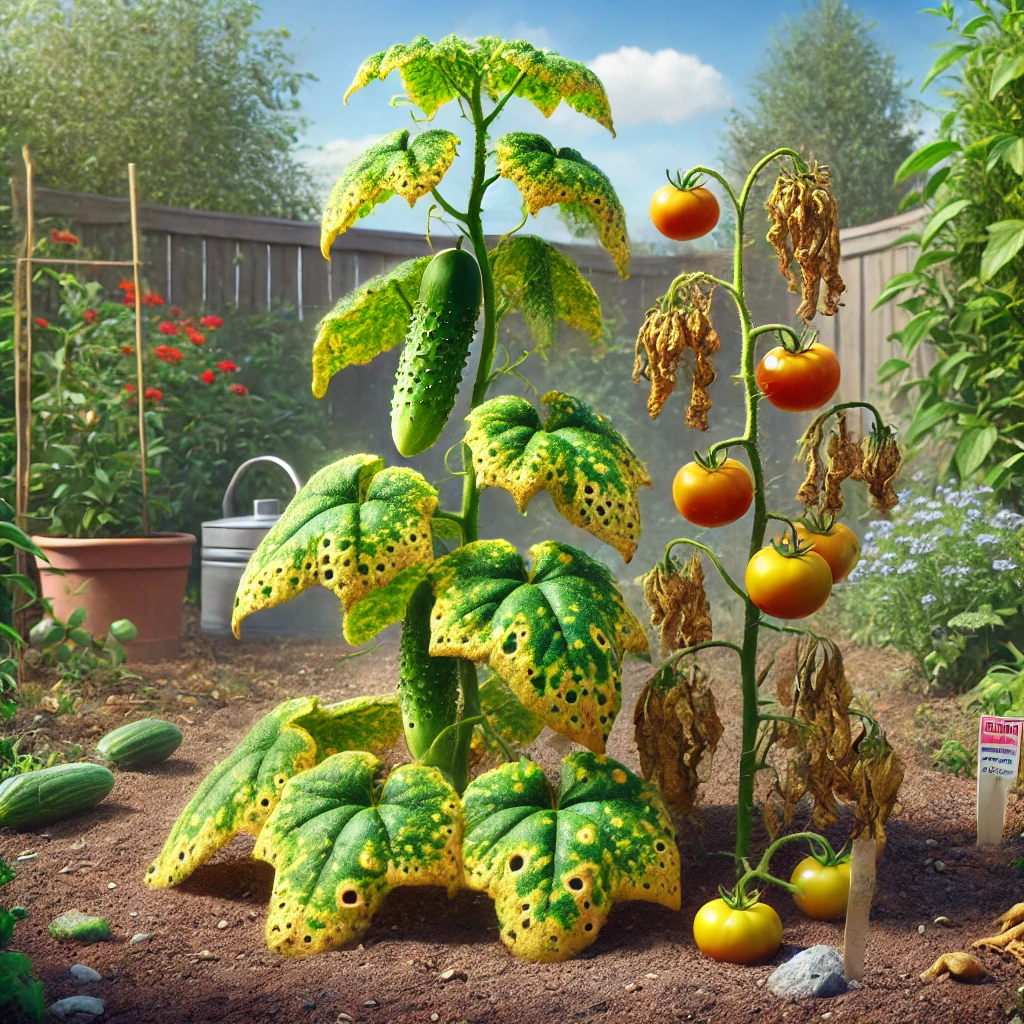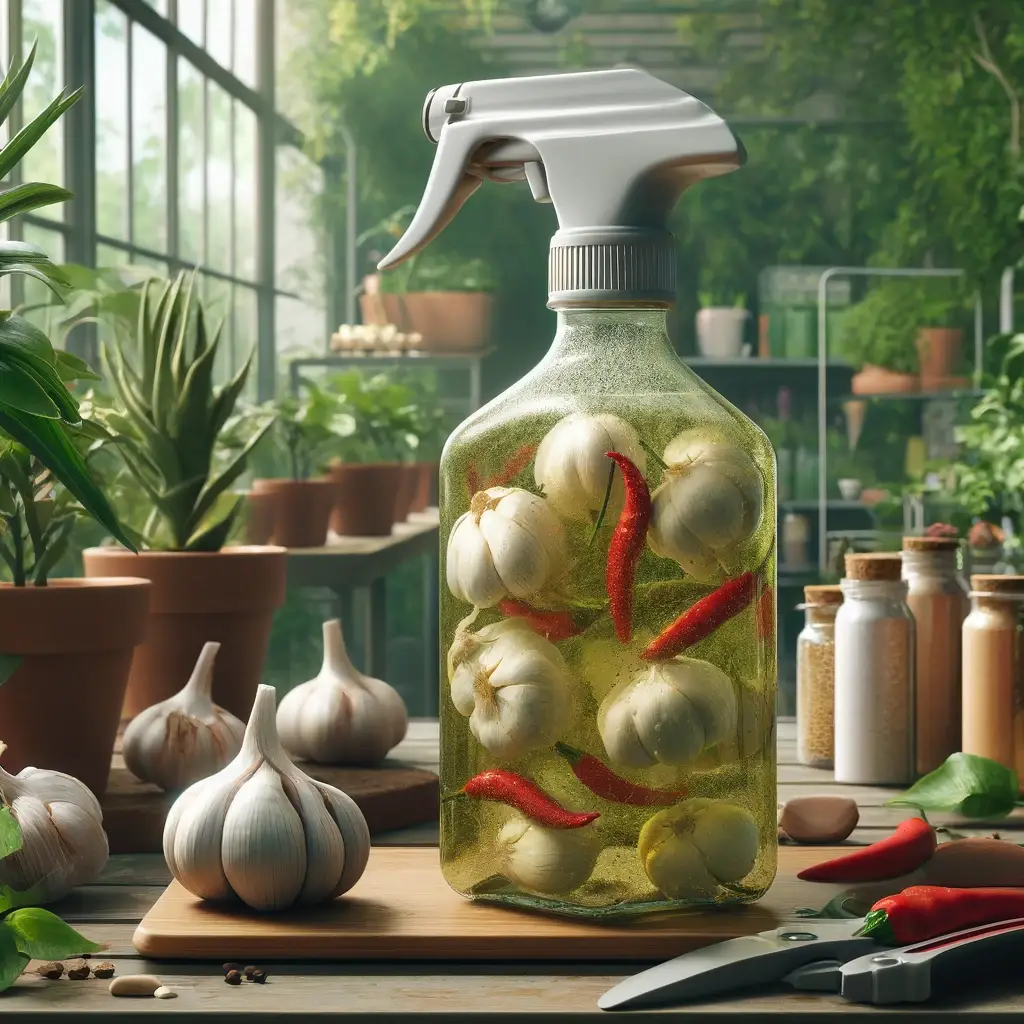Growing healthy tomatoes can be challenging due to the wide range of diseases that can affect them. These diseases can be caused by fungi, bacteria, viruses, or environmental conditions, and they can significantly reduce your harvest if not managed properly.
Understanding these common tomato diseases is the first step in preventing them and ensuring a successful crop. Fortunately, organic gardening methods offer effective ways to protect your plants without relying on harmful chemicals.
- Tomato diseases are common and can severely impact your harvest if not properly managed.
- Identifying symptoms early is crucial for effective disease control.
- Organic prevention methods, such as crop rotation, mulching, and selecting disease-resistant varieties, can significantly reduce the risk of disease.
- Proper watering techniques and good garden hygiene are essential for maintaining healthy tomato plants.
- Using organic fungicides and natural pest control methods helps protect your tomatoes without harmful chemicals.
Common Tomato Diseases and Their Symptoms
Tomato plants are susceptible to several diseases that can impact their growth and fruit production. Understanding the symptoms of these diseases is crucial for early identification and effective treatment.
1. Early Blight
- Symptoms: Dark brown spots with concentric rings on older leaves; yellowing around the spots.
- Effects: Causes defoliation, which weakens the plant and exposes the fruit to sunscald.
- Progression: Typically starts at the base of the plant and moves upward.
2. Late Blight
- Symptoms: Large, irregular, water-soaked spots on leaves, stems, and fruit; white fungal growth on the underside of leaves.
- Effects: Can destroy entire plants and spreads rapidly in wet, cool conditions.
- Progression: Often begins on the edges of the leaves, quickly affecting the entire plant.
3. Septoria Leaf Spot
- Symptoms: Small, circular, dark spots with grayish-white centers on leaves and stems.
- Effects: Causes significant leaf drop, reducing plant vigor and yield.
- Progression: Typically appears on the lower leaves first and spreads upward.
4. Fusarium Wilt
- Symptoms: Yellowing of leaves, often starting on one side of the plant; wilting despite adequate watering.
- Effects: Causes the plant to wilt and die as the disease progresses.
- Progression: The fungus invades the plant’s vascular system, leading to blockage of water transport.
5. Tomato Mosaic Virus
- Symptoms: Mottled light and dark green patches on leaves; leaves may become twisted or deformed.
- Effects: Stunted growth and reduced fruit production.
- Progression: Spreads through infected seeds, soil, or by handling plants after touching infected material.
Organic Prevention Methods
Preventing tomato diseases organically is not only environmentally friendly but also effective in maintaining the health of your plants. By adopting a few key practices, you can reduce the risk of disease and ensure a robust harvest.
1. Selecting Disease-Resistant Tomato Varieties
Importance: Choosing tomato varieties that are resistant to common diseases is one of the most effective ways to prevent problems before they start.
Popular Varieties:
- Defiant: Resistant to late blight.
- Mountain Magic: Resistant to both early and late blight.
- Iron Lady: Resistant to early blight, late blight, and septoria leaf spot.
Sourcing Seeds: Look for certified organic seeds from reputable suppliers to ensure they are free from chemical treatments.
2. Crop Rotation and Soil Management
Crop Rotation:
- Avoid planting tomatoes in the same spot each year. Rotate with non-solanaceous crops like beans, corn, or lettuce to break the disease cycle.
- Implement a 3- to 4-year rotation plan to reduce the risk of soil-borne diseases like fusarium wilt.
Soil Health:
- Add organic matter such as compost to improve soil structure and enhance beneficial microbial activity.
- Use cover crops, like clover or rye, to maintain soil fertility and suppress disease-causing organisms.
- Regularly test soil pH and nutrients to keep the soil balanced and fertile.
3. Proper Watering Techniques
Watering Methods:
- Avoid overhead watering, which can splash soil onto the leaves, spreading disease. Use drip irrigation or water at the base of the plants to keep foliage dry.
- Water early in the morning to allow leaves to dry quickly, reducing the chance of fungal infections.
Frequency and Timing:
- Water consistently to avoid stress that can weaken plants, making them more susceptible to disease.
- During dry periods, maintain even soil moisture but avoid waterlogging, which can lead to root diseases.
4. Mulching to Prevent Soil-Borne Diseases
- Types of Mulch: Use organic mulches like straw, compost, or shredded leaves to cover the soil around tomato plants.
- Benefits: Mulching helps prevent soil-borne diseases by reducing soil splashing onto leaves, retaining soil moisture, and regulating soil temperature.
- Application: Apply a 2-3 inch layer of mulch around the base of the plants, keeping it a few inches away from the stem to prevent rot.
5. Pruning and Plant Spacing
- Remove the lower leaves of the plant, especially those touching the soil, to improve air circulation and reduce the risk of disease.
- Regularly remove suckers (the small shoots that grow between the stem and branches) to improve air flow and direct energy into fruit production.
Plant Spacing:
- Space tomato plants 18-24 inches apart for determinate varieties and 24-36 inches for indeterminate varieties.
- Proper spacing ensures adequate air circulation, reducing the humidity that fosters disease growth.
6. Natural Pest Control to Reduce Disease Spread
- Beneficial Insects: Encourage natural predators like ladybugs and lacewings that feed on harmful insects like aphids and whiteflies, which can spread diseases.
- Organic Pesticides: Use neem oil or insecticidal soap to manage pests organically without harming beneficial insects.
- Homemade Sprays: Make a garlic or chili pepper spray to deter pests naturally. Mix crushed garlic or chili peppers with water, strain, and apply to plants as needed.
- Companion Planting: Plant marigolds, basil, or nasturtiums near tomatoes to repel harmful insects and reduce the spread of disease.
7. Organic Fungicides and Home Remedies
- Organic Fungicides: Use copper-based fungicides or sulfur sprays, both of which are approved for organic gardening, to prevent and manage fungal infections like blight and leaf spot.
- Home Remedies: Create a baking soda spray by mixing 1 tablespoon of baking soda with a gallon of water and a few drops of liquid soap. Apply weekly to prevent fungal diseases. A milk spray made by diluting 1 part milk with 9 parts water can help prevent powdery mildew.
- Application Tips: Apply these treatments early in the morning or late in the evening to avoid burning the plants in direct sunlight. Reapply after rain for continued protection.
FAQs About Preventing Tomato Diseases Organically
How often should I rotate my tomato crops?
Rotating tomato crops every 3 to 4 years is recommended. This practice helps prevent the buildup of soil-borne diseases like fusarium wilt and ensures that the soil remains healthy and fertile.
What are the signs of overwatering my tomato plants?
Overwatering can cause yellowing leaves, wilting, and root rot. If the soil remains waterlogged, the roots can’t absorb oxygen, leading to stunted growth and increased susceptibility to diseases.
Can I use compost to prevent tomato diseases?
Yes, compost is excellent for improving soil health and preventing diseases. Well-composted organic matter enriches the soil with beneficial microbes that can suppress harmful pathogens, reducing the risk of disease.
What are some effective organic fungicides for tomatoes?
Copper-based fungicides and sulfur sprays are commonly used organic options. These can help control fungal diseases like blight and septoria leaf spot when applied regularly and correctly.
How can I tell if my tomato plant is diseased early on?
Early signs of disease include yellowing or spotted leaves, stunted growth, and unusual wilting. Regularly inspect your plants for these symptoms to catch and address issues before they spread.
What is the best way to water tomatoes to prevent disease?
The best method is to water at the base of the plant, avoiding overhead watering. Drip irrigation or soaker hoses are ideal as they keep the foliage dry, reducing the risk of fungal infections.
How does mulching help prevent tomato diseases?
Mulching helps by preventing soil-borne pathogens from splashing onto the leaves during watering or rain. It also maintains soil moisture, reduces weeds, and regulates soil temperature, all of which contribute to healthier plants.
Are there natural ways to control pests that spread tomato diseases?
Yes, natural methods include introducing beneficial insects like ladybugs, using neem oil or insecticidal soap, and planting companion plants like marigolds and basil, which repel harmful pests.
What should I do if I notice blight on my tomato plants?
If you notice blight, remove and dispose of the affected leaves or plants immediately to prevent it from spreading. Apply an organic fungicide, like copper spray, to the remaining plants as a preventive measure.
Is it safe to use homemade sprays on tomato plants?
Yes, homemade sprays such as those made with baking soda or milk are safe and effective for preventing diseases like powdery mildew and other fungal infections. Just be sure to follow recommended recipes and application rates to avoid damaging the plants.













